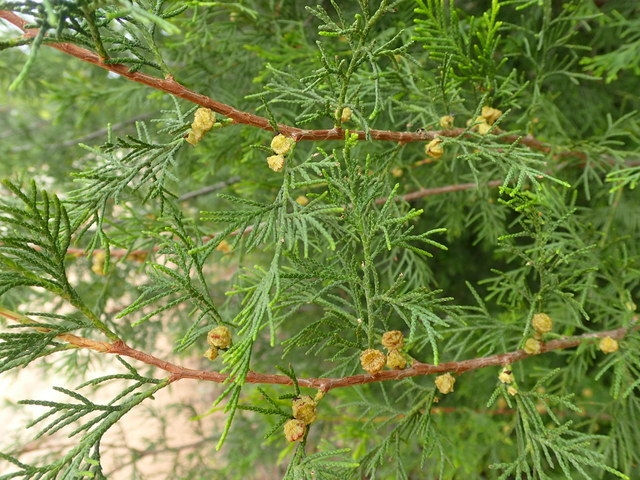Atlantic White Cedar
(Chamaecyparis thyoides)
Atlantic White Cedar (Chamaecyparis thyoides)
/
/

mfeaver
CC BY 4.0









































































Estimated Native Range
Summary
Atlantic White Cedar is valued for its ornamental foliage and its ability to thrive in wet conditions, making it suitable for planting in rain gardens and areas with poor drainage. It is also used for screening and as a windbreak due to its dense foliage. The species is adapted to full sun or part shade and prefers acidic, sandy, and consistently moist soils. However, due to its shallow root system, it is susceptible to windthrow. Gardeners should be aware of its waterlogged habitat requirements to avoid drought stress. Additionally, it is relatively low maintenance but can suffer from pests like cypress tip moth and issues like cedar blight.CC BY-SA 4.0
Plant Description
- Plant Type: Tree
- Height: 30-50 feet
- Width: 30-40 feet
- Growth Rate: Moderate
- Flower Color: N/A
- Flowering Season: Non-Flowering
- Leaf Retention: Evergreen
Growth Requirements
- Sun: Full Sun, Part Shade
- Water: Medium, High
- Drainage: Fast, Medium
Common Uses
Bird Garden, Butterfly Garden, Deer Resistant, Erosion Control, Fragrant, Hedges, Low Maintenance, Potted Plant, Rock Garden, Salt Tolerant, Street Planting, Water Garden
Natural Habitat
Coastal wetlands, swamps, and peat bogs
Other Names
Common Names: Southern White Cedar, Whitecedar, Atlantic White Cypress, False-Cypress, Weiße Scheinzypresse, Weiße Zeder, Zederzypresse, Cedro Blanco, Faux-Cyprès Blanc, Mocsári Álciprus
Scientific Names: , Chamaecyparis thyoides, Chamaecyparis thyoides f. andelyensis, Chamaecyparis thyoides f. variegata, Chamaecyparis thyoides f. ericoides, Chamaecyparis thyoides f. glauca, Chamaecyparis sphaeroidea var. andelyensis, Chamaecyparis sphaeroidea var. glauca, Chamaecyparis sphaeroidea var. pendula, Cupressus ericoides
GBIF Accepted Name: Chamaecyparis thyoides (L.) Britton, Sterns & Poggenb.